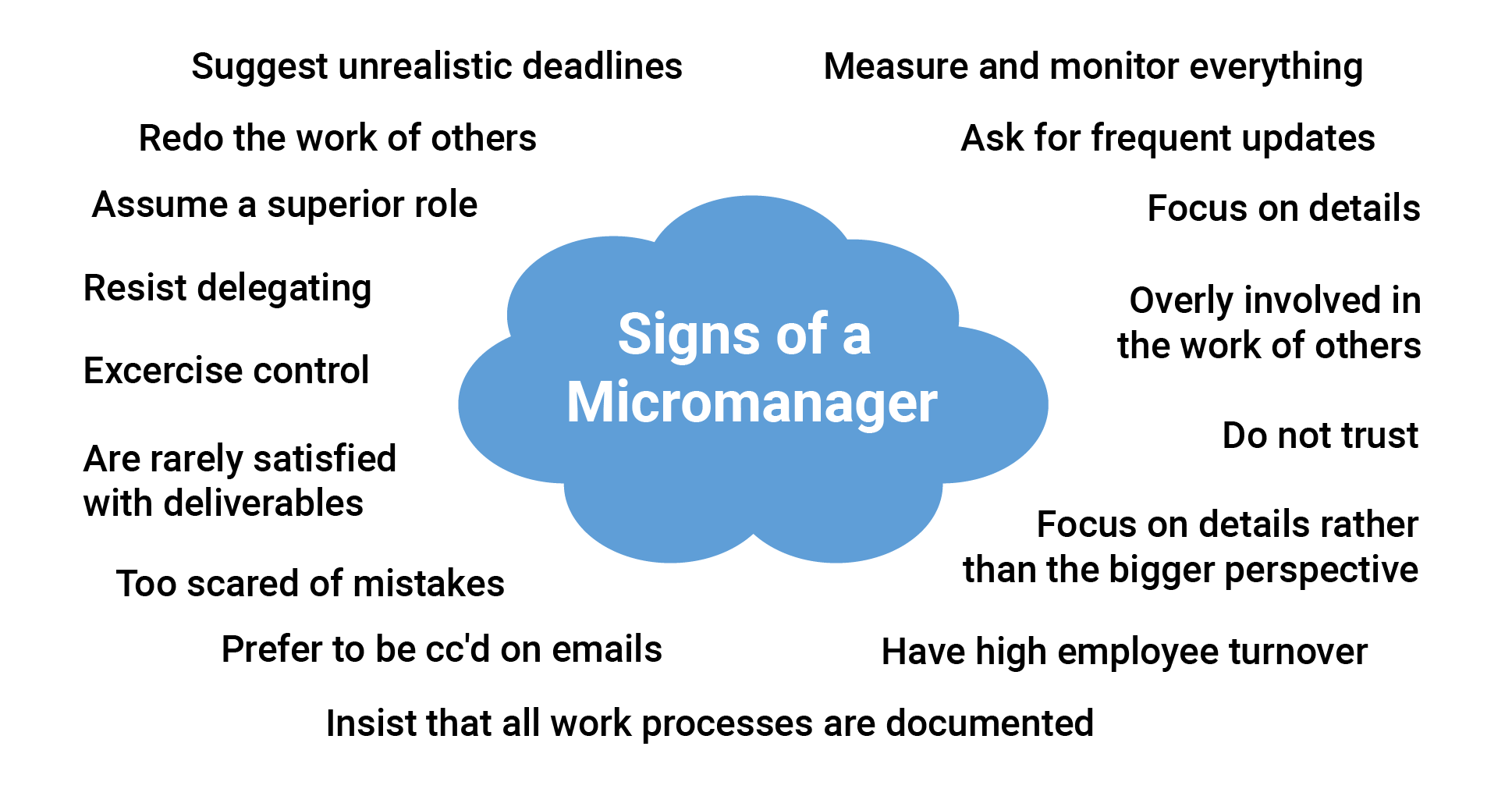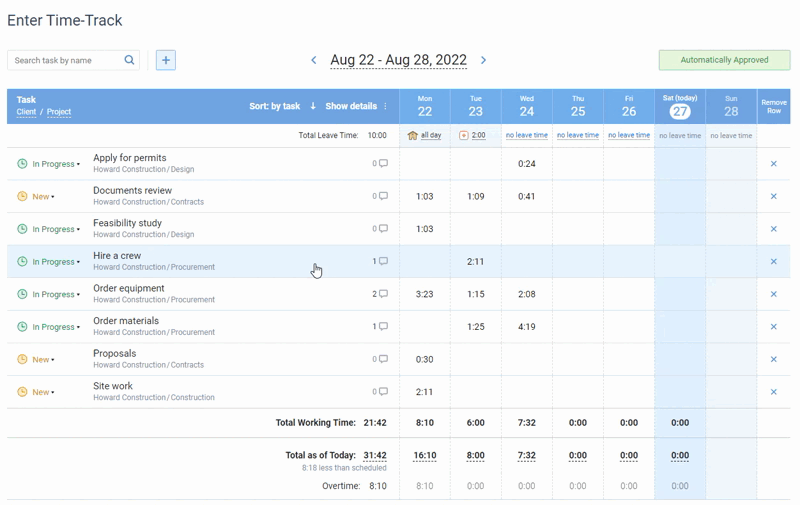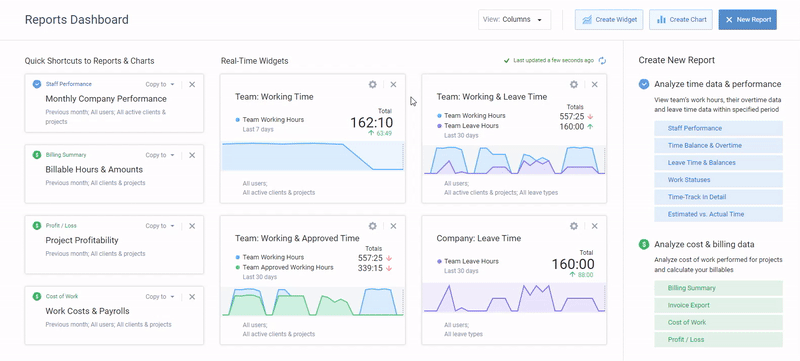
The COVID pandemic and the massive switch to remote work forced us to learn new ways of leading and managing teams. However, many managers still hold on to the old-days thinking and assume that remote workers slack off most of the time, therefore they should be monitored using daily check-ins or even activity monitoring software. Here are some other quick signs that you are a chronic micromanager:
- You ask for frequent work updates on where things stand
- You aren’t satisfied with the work of your team members and think that you could’ve done it better
- You laser in on the details and don’t miss a chance to make corrections
- You are never satisfied with project deliverables
- You feel the need to monitor the location and the activities of your employees
If any of these show up frequently in your thoughts and behavior, chances are you are a micromanaging boss. Read on to learn whether you are a micromanager and what you can do to revise your attitude and become a better manager.
What Is Micromanagement?
Micromanagement refers to excessive or unnecessary control over a person, team or activity. Micromanaging bosses have a tendency to tell subordinates how to do their job, closely observe and control their work and be demanding in a way that may be irrelevant to the result. About 79% of employees had experienced micromanagement, said that it negatively affected their performance and morale and made them consider changing jobs.

Are You a Micromanaging Boss Checklist
To learn if you have a tendency towards micromanaging, go through the following list of clues. Make a count of the points that show up in your attitude and behavior and see where you stand on a scale from a good manager to a micromanager.
- Your employees never take any initiative or come up with new ideas
- You request frequent status reports from your subordinates
- You regularly check employee activity using activity tracking software
- You feel frustrated if a team member spent a little more time on a task than expected
- You regularly check employee calendars, emails, desktops
- You often redo the work delegated to an employee
- You require your team to document their work process
- You call or text your team members outside of their working hours
- You require your team to comment every time entry in the time tracking software with the details of their work
- You insist that your employees copy or blind copy you on most emails
- You rarely take a vacation because otherwise your team won’t manage without you
- You feel like you are babysitting your subordinates
- When delegating a task, you focus on how to do it instead of what has to be done
- You feel anxious if their Skype or Slack status is offline during the working hours
- You hover to make sure subordinates do things right
- Your top talents and high performers leave your team
- It is hard for your to relax and leave work at work
- Your team members don’t ask you questions
- You consider brainstorming a waste of time
- You are reluctant to delegate
- You are rarely quite satisfied with a work product
- You take great pride in correcting or changing people’s work
- Every subordinate’s decision requires your approval
- You are terrified by the thought that your team can make mistakes
- You time-estimate your team’s work for them
- You rarely entertain proposals for change
- You don’t give praise and recognition to your team
- The turnover rate in your team is high
- You think you know it all and hardly, if ever, reconsider your decisions
- You tend to withhold information and keep your subordinates in the dark
Results:
0-10 points. You give your team enough autonomy and freedom to feel engaged, valued and happy. When you notice an unproductive behavior pattern, you know how to apply micromanagement tactics in a healthy manner to uncover the reasons, find solutions and get the malfunctioning part of your team working again.
11-20 points. There’s a high chance that your team members think of you as a control freak and occasionally suffer from your excessive intrusion and control. They may not feel important enough and be afraid to share their ideas with you. Give your team a little more freedom, delegate work more often and see how your team performance goes times higher.
21-30 points. You are a micromanager and your team might think so too. Read on to learn how your management style affects your team and what you can do about it to become a better leader.
How Micromanagement Affects Your Team
Micromanagement is a counterproductive phenomenon that is unfortunately very common. Here are some of the key reasons why you should review your management approach and use your resources more effectively.

- Poor performance. Micromanaged employees feel like they cannot do anything right or like nothing they do matters, which drains their motivation and lowers the quality of their work.
- Decreased morale. 85% of workers said that micromanagement damaged their morale, feelings of being trusted and valued.
- High turnover rate. If employees don’t feel valued and have no loyalty left, they change jobs, bringing hiring costs and lost profits to companies.
- Decreased teamwork. Micromanagement interrupts any concentrated efforts, limits communication and has high chances of killing teamwork.
- Less creativity and innovation. Micromanagement limits freedom and initiative of the employees, inviting little to no ideas and change.
- More stress and burnout. Chronic micromanagement causes stress and, if it persists, turns into burnout, making your subordinates lose what’s left of their enthusiasm.
- Waste of time. Constant meetings, presentations, performance reports are a waste of time for you and your team – you could use it to generate revenue instead.
How to Stop Micromanaging Your Team
After you have become aware of your micromanaging tendencies, go through the following steps to get rid of toxic management habits and become a better leader.
1. Reflect on your behavior
Awareness is the first step towards becoming a better manager. Download this Micromanagement Checklist, tick the practises that you use and write down the corresponding reasons opposite them. What makes you think and behave this way? Are you worried that your team won’t deliver in time? Or that the results won’t be good enough?
2. Gather feedback
There’s often a miscommunication between managers and their subordinates that distorts the motives and experiences of the opposite side. While you may use micromanagement as a means to discover and fix an issue, half of your team might not be aware of that and be extremely annoyed by your behavior. To get a clear understanding of how good your management style is, gather anonymous opinions from your team members and be ready to take criticism.
3. Introduce changes
Review your micromanaging practises and team feedback. Use it to develop and implement a set of different management approaches Most likely, they will look like this transition from the micromanaging to the coaching leadership.
Here are a few tips to help you get started:
- Trust your team. Most micromanagers have the best interest at heart but don’t have enough trust in their team. Practice delegation, give your team more freedom, ask questions if they do the task in the way you wouldn’t and provide feedback.
- Embrace failure. Perfectionism is another common trait of micromanagers. If you are guilty of it, give your team enough autonomy to make decisions and mistakes and help them learn from them.
- Build transparency. Use time tracking software to distribute the workload, see work progress and time expenses without disturbing your team. Use task descriptions and comments to share important details and manage your team and projects in a single place.
- Set clear expectations. Focus on establishing a clear vision of the work result instead of telling your subordinates how to achieve it.
- Hire the right people. Managers often feel the urge to micromanage underqualified employees. Instead, hire professionals and leave their work to them.
4. Review results and learn
After you make changes to your management style, give it some time to take roots and produce results. Use productivity reports, team feedback and other parameters to see if these changes were beneficial for your team and their productivity. Engage in training programs for managers and learn to manage time better to become a better leader.
How to Become a Better Manager
Since the breakout of the COVID pandemic and the massive switch to home offices, managers may feel frustrated by being unable to see their team personally and feeling the need to be sure that their subordinates don’t slack off when not supervised. Implementing the right online tool that is powerful, reliable and non-intrusive might do the trick.
For example, in actiTIME, you can manage remote and distributed teams and be sure that your project progress and team performance are available to you any time.

Online timesheet interface in actiTIME where every user can select task parameters
they want to see in their timesheets
Create custom work scope and workflows, create tasks, specify their estimates and deadlines and assign them to your team. After they record some time against them and move them down the workflow, you’ll be able to review task progress, personal and team performance, project costs and more without disturbing your team.

Reports dashboard in actiTIME – set up real-time data widgets
and add report shortcuts for quick access
Choose between online and on-premises software or use the mobile app if you work away from the desk. All your data will be safely stored in case you go offline and synced as soon as you connect to the Internet. actiTIME integrates with 2,000+ software so you don’t have to worry about capturing hours in your industry software and other productivity tools. Try actiTIME for free with a 30-day trial (no credit card required).















































